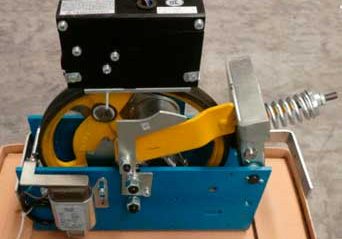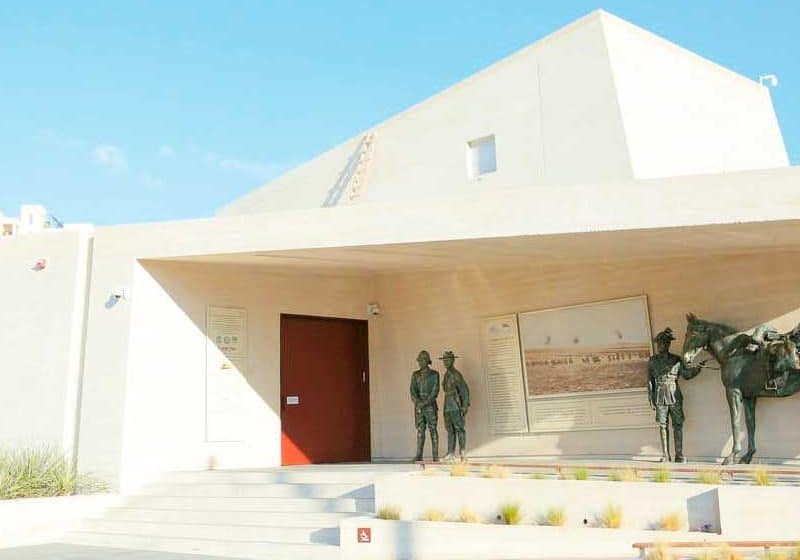First Class
Feb 1, 2019

D&D’s Elevator Learning Center, like Yonkers itself, is one of a kind.
Expect the unexpected from Yonkers. New York’s fourth-largest city with a history dating to the 1600s, Yonkers enjoyed a robust role in industry in the 1800s and 1900s. It was here the world’s first completely synthetic plastic, Bakelite, was invented, where much of the work that led to the invention of FM radio was performed and where, in 1853, Elisha Graves Otis invented the first elevator safety brake and opened Otis Elevator Co. — the first elevator factory in the world — on the banks of the Hudson River.[1] Brick smokestacks with the faded Otis logo still loom over Yonkers, but the facility is hardly a ruin. It is now used by Kawasaki for subway-car manufacturing.
Yonkers citizens take pride in their community, filling your author in on fascinating facts such as the hidden gem that is Untermeyer Gardens — created by wealthy Yonkers lawyer and horticulture enthusiast Samuel Untermeyer in 1916 and now run by a conservancy[2] — or Yonkers’ pivotal role in school desegregation, a saga that resulted in the book Show Me a Hero and an acclaimed HBO television series based on that book.[3] “I’m getting all wound up on Yonkers,” said Charles “Chuck” Lesnick, deputy council/assistant commissioner for Governor Andrew Cuomo’s Office of Rent Administration and former Yonkers city councilman. Lesnick was among approximately 50 guests at the grand opening of D&D Elevator’s Elevator Learning Center (ELC) on the sunny, warm morning of October 3, 2018. D&D Elevator President Bobby Schaeffer cut the ribbon for the unique, 2,500-sq.-ft. facility — located behind an unassuming door in an unassuming corporate business park — that provides elevator-specific training to adults employed with both union and nonunion companies and, in the future, some of the tens of thousands of high-school students in the Yonkers Public Schools system (per its website).
Evolution of a Program
Schaeffer shared that the National Association of Elevator Contractors (NAEC), with the support and encouragement of himself and Elevator World, Inc. Editor and Publisher Ricia Sturgeon-Hendrick, started the Certified Elevator Technician (CETT®) program in 2001. In 2006, NAEC began the process of achieving accreditation from the American National Standards Institute and the International Organization for Standardization, which happened in 2011. “That was a big feather in our cap and really legitimatized the program,” Schaeffer says.
CET is now approved in most states that require licensing. Around the same time of the grand opening, Schaeffer learned it had been approved by the Canadian province of British Columbia. “That’s over 100 new candidates going into the program a year,” he says. “We’re very excited about that.” At the time this story was being written, there were more than 750 CET students in the program, with more than 1,400 becoming active CETs since its inception.
Schaeffer hopes the center and its flexible learning options will cause the number to grow — ideally to the point it addresses a workforce shortage that has been particularly brutal on the elevator industry. He said:
“You might ask, ‘If you have such a great, proven history and program, why are you enhancing it?’ Well, in 2017, we surveyed over 11,000 elevator technicians across the country. Out of hundreds of responses, they all said the same thing: ‘We don’t have enough opportunity for education and training. Whether union or nonunion, we all need training, especially when it comes to new technology.’ The other thing that was a rude awakening was nobody was out of work.”
So, D&D decided to open the center, which includes both classroom and hands-on training areas with working models of elevator systems. In addition to CET, the ELC offers continuing- education and OSHA safety training. “We want to do it all here,” Schaeffer says.
Services provided by the ELC will include certified testing, proctoring and graduate placement services for entities that provide apprenticeship and recertification. Working with human- resources professionals, it is planning to add personal attributes and ethics training to help create well-rounded candidates who understand the importance of communication, quality and professionalism.[4]
The CET program taught at the learning center is a four-year program. Yonkers Public Schools’ vocational students already have access to basic electricity and plumbing training. The goal is to add the option for a semester or two of elevator-specific training, which Schaeffer said will help streamline the transition to the CET program.
The average starting salary for a CET is close to US$80,000,[5] a fact Schaeffer, city and school officials want to drive home to students. Schaeffer says:
“That’s a very impressive number in today’s world. A kid going through college may get a marketing degree or degree in History or English, and, yes, he can become a teacher. But I don’t think the starting salary is more than US$50,000. You go through this four-year program, and it’s considerably more than that. We pay 100% of your education, but you’re also working, you’re earning. Because of our apprenticeship structure, every six months, if you meet your guidelines for education and spend 1,000 hr. in the field, you’re eligible for a raise. So, as long as you have all your tests and homework done, it’s getting paid for, and you’re educating yourself and you’re learning, so there’s a lot of value in this training. At this point, it’s kind of a best-kept secret.”
A lot of flexibility in the methods and pace at which individuals learn was built into the program. For the past several months, ELC has been piloting remote access to classroom training, a system Schaeffer demonstrated to guests while he talked live to a D&D employee who was at D&D headquarters a few miles away. “José could be next door, or he could be 1,000 mi. away and he can still participate in the learning process,” Schaeffer says.
Accommodating Learning
Schaeffer described the three types of learning taking place at the ELC (and, really, any education program): auditory, visual and tactile. Everybody learns differently, he pointed out, and each component is important in its own way.
Auditory includes things like lectures, while visual provides pictures of equipment on which the trainee will be working. He continued:
“Tactile is what we call ‘hands-on,’ where you’re actually taking things apart and putting them back together. You’re cutting them open and seeing how they function. You’re using electrical theory and motor theory to make it all understandable as you’re working. So, at one point, you’re trying to build an elevator and, at another, trying to make it function. At another, you’re trying to keep it functioning for a very, very long time.”
The program takes a trainee from basic elevator history and function to installation, inspection, maintenance and compliance with electrical and elevator code, which Schaeffer noted is a “constantly moving target.” It covers basic electrical theory, including wiring, and door and motor installation. It requires the trainee to understand how all the parts of an elevator fit together and work. He observed:
“One of the things I always tell people is our trade is made up of many trades. We are our own welders, our own electricians, our own millwrights. We’re computer programmers. We have to understand passive components and active components to understand how elevators function and what needs to be fixed if something goes wrong. We erect iron and steel and hopefully put it into nice, straight shafts. For hydraulic pressure systems, we do all our own pipe cutting and installation of things like seals and O-rings. We don’t sub out the work. That’s why it’s a four-year program. There’s a lot to learn.”
Lesnick said in opening the ELC, D&D joins a long line of Yonkers innovators like Edwin Howard Armstrong (FM radio), Leo Baekeland (Bakelite) and Otis. “Even with a process that is well established, you have to perfect it, and that’s what D&D has done,” Lesnick said. “That’s good news for trainees, employees and businesses all over the state and region.”
References
[1] yonkersny.gov/live/about-yonkers/rich-history
[2] untermyergardens.org
[3] en.wikipedia.org/wiki/Show_Me_a_Hero
[4] Newman, Ralph. “D&D Elevator Opens Yonkers Training
Center for Elevator Technicians,” press release. October
3, 2018.
[5] bls.gov/ooh/construction-and-extraction/elevatorinstallers-
and-repairers.htm
Get more of Elevator World. Sign up for our free e-newsletter.








